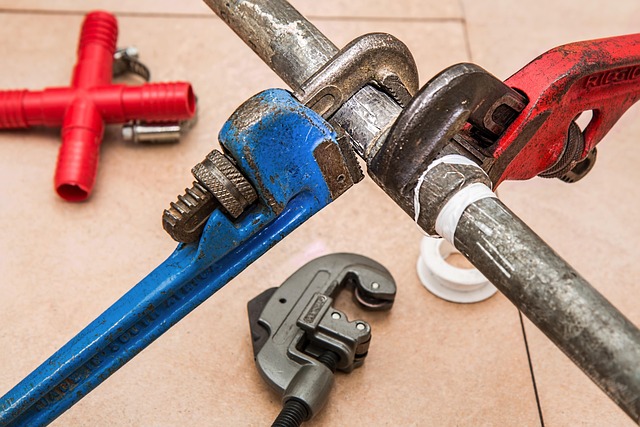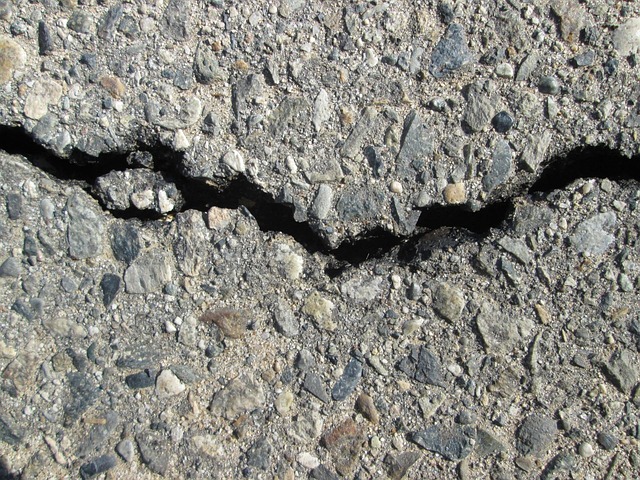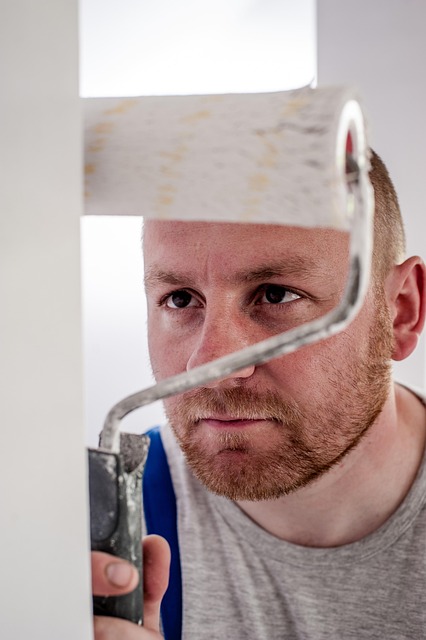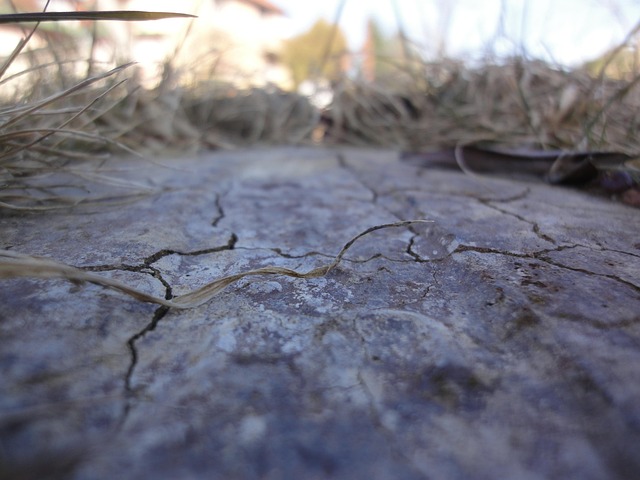Foundation slab cracks, driven by factors like soil shifts, moisture, construction flaws, or tree roots, range from hairline to structural defects. Early detection through regular inspections is crucial for preventing further damage. Crack analysis using tools like fracture mapping and non-destructive testing helps determine repair needs, guiding methods from injection foam/epoxy for minor cracks to underpinning or slab replacement for severe issues. Tailored approaches, including epoxy injection, carbon fiber wraps, and self-leveling concrete fills, ensure long-lasting repairs based on crack severity. Choosing the right material, like concrete for larger cracks or epoxy for smaller, delicate areas, is key to successful crack repair. Regular inspections and proper maintenance prevent foundation slab issues, with case studies offering practical solutions for various crack types.
Foundation slab cracks can be a serious concern for any homeowner, but understanding their causes and available repair methods is key to addressing this issue effectively. This comprehensive guide delves into the intricacies of crack repair, covering everything from identifying different types of foundation cracks to choosing the right repair material and learning a step-by-step process. By exploring real-world case studies and understanding common mistakes to avoid, you’ll gain valuable insights for maintaining healthy foundation slabs.
Understanding Foundation Slab Cracks: Causes and Types

Foundation slab cracks can be a common issue, but understanding their causes and types is crucial for effective crack repair. These cracks often result from various factors, including shifts in soil conditions, changes in moisture levels, improper construction, or even tree roots infiltrating the area. There are primarily two types: hairline cracks and larger, structural cracks. Hairline cracks, typically thin and shallow, may be caused by minor movements in the foundation and can often be addressed with simple repair methods like injection foam or epoxy. On the other hand, structural cracks indicate more significant issues, such as settlement or heave, and may require more intensive solutions, like underpinning or slab replacement.
Identifying the type of crack is essential for selecting the right crack repair method. Homeowners should remember that early detection is key to preventing further damage. Regular inspections can help identify minor cracks before they become more severe structural problems, ensuring timely crack repair and maintaining the integrity of the foundation slab.
Assessing the Extent of Damage: Crack Analysis

When assessing foundation slab damage, crack analysis is a crucial step in determining the extent of repair needed. Cracks in slabs can range from mere hairline fractures to extensive networks that compromise structural integrity. To begin the crack repair process effectively, it’s essential to identify the type and severity of cracks.
Close inspection using tools like fracture mapping and non-destructive testing methods helps professionals understand crack patterns and width. This analysis guides the selection of appropriate repair techniques, such as injection molding or carbon fiber wrapping for smaller, controlled cracks, or more intensive measures required by larger, structural defects.
Methods for Crack Repair: A Comprehensive Overview

When it comes to foundation slab repair, crack repair is a critical aspect that requires careful consideration. The methods for fixing cracks can vary depending on their severity and type. For smaller, hairline cracks, a common approach is to use epoxy injection. This method involves drilling small holes into the crack and injecting a mixture of epoxy resin and hardener, which fills and strengthens the fracture from within. Once cured, these repairs are as strong as the original concrete, providing a long-lasting solution.
For larger cracks, particularly those that run deeper or are structurally compromising, a different strategy is necessary. Carbon fiber wraps have gained popularity for such cases. This technique involves applying layers of carbon fiber fabric soaked in epoxy over the crack. The composite material helps to distribute stress and prevent further damage, offering both strength and flexibility. Another innovative method is self-leveling concrete, which can fill and smooth out cracks while also providing a new surface for enhanced aesthetic appeal.
Choosing the Right Repair Material: Concrete vs. Epoxy

When it comes to repairing a foundation slab, selecting the appropriate material is a critical step in ensuring long-lasting results for your crack repair. Two commonly used options are concrete and epoxy. Each has its advantages, catering to different types of damage and specific needs.
Concrete is a popular choice due to its strength and durability. It’s ideal for repairing larger cracks or structural issues as it can withstand significant weight and pressure. Concrete repairs also offer better resistance to chemical corrosion and wear, making them suitable for both residential and commercial properties. On the other hand, epoxy is an excellent pick for smaller cracks and more delicate repairs. Epoxy injections provide exceptional bond strength, effectively filling and supporting cracks, preventing further damage. It’s a faster process compared to concrete repair and is often used in places like basements or areas with mild traffic.
The Process: Step-by-Step Guide to Fixing Cracks

Fixing cracks in your foundation slab is a crucial step towards ensuring the structural integrity and longevity of your home or commercial property. Here’s a step-by-step guide to help you tackle this task efficiently. First, identify the type and severity of the crack using a visual inspection. Cracks can vary from hairline fissures to larger, more pronounced gaps. Next, prepare the area by clearing debris and ensuring the crack is free from any loose material. This step is vital for effective crack repair.
After preparation, mix a suitable epoxy or polymer-based filler designed specifically for foundation repairs. Follow the manufacturer’s instructions for proper mixing ratios. Using a putty knife, carefully inject the mixed compound into the crack, filling it completely. For wider cracks, consider using a two-part injection system for better penetration and support. Allow the filler to cure according to the product guidelines before walking on or applying any significant pressure to the repaired area.
Common Mistakes to Avoid During Slab Repair

When repairing a foundation slab, there are several common mistakes that homeowners often make, which can compromise the effectiveness and longevity of the repair process. One of the most critical blunders is attempting to fix a crack without properly assessing its severity. Many minor cracks might not require extensive repair but should be monitored for any signs of progression. Conversely, ignoring larger, more prominent cracks could lead to structural damage over time.
Another mistake to avoid is using inferior or inappropriate materials for the crack repair. Different types of cracks may need specific solutions—epoxy injections for narrow cracks and hydraulic cement for wider ones, for instance. Using the wrong material can result in an unstable fix that doesn’t withstand the test of time. Additionally, DIY repairs without professional guidance can be risky, especially for complex slab issues. It’s advisable to consult experts to prevent these avoidable errors and ensure a robust and lasting crack repair.
Maintenance and Prevention: Long-Term Solutions for Healthy Slabs

Maintaining and preventing foundation slab issues is key to ensuring long-term health for your slabs. Regular inspections are crucial to identify any potential cracks or signs of damage early on, allowing for prompt crack repair. This proactive approach can prevent small problems from becoming major structural concerns.
Implementing preventive measures such as proper drainage, moisture control, and regular reinforcement checks can significantly reduce the likelihood of slab damage. Effective waterproofing techniques and regular maintenance routines are game-changers in safeguarding your foundation slabs against potential hazards like heave, settlement, and shift.
Case Studies: Real-World Examples of Successful Crack Repairs

In the realm of foundation repair, case studies offer tangible evidence of successful crack repair solutions. These real-world examples provide invaluable insights for property owners and contractors alike, demonstrating effective strategies to address various types of cracks in slab foundations. For instance, a recent case study highlighted a residential property with horizontal cracks appearing over time due to poor soil conditions. The solution involved a comprehensive approach: first, identifying the root cause of the cracks, then implementing a series of techniques including structural stabilization and resin injection. This method not only stopped the crack progression but also enhanced the overall integrity of the foundation.
Another compelling study showcased a commercial building facing vertical cracks in its slab due to settlement issues. The repair process entailed a meticulous evaluation of the damage, followed by the application of advanced epoxy injections. This intervention effectively filled the cracks and prevented further structural deterioration. These successful crack repair projects serve as living proof that prompt action and specialized techniques can mitigate potential foundation problems, ensuring the longevity and stability of structures across diverse environments.
